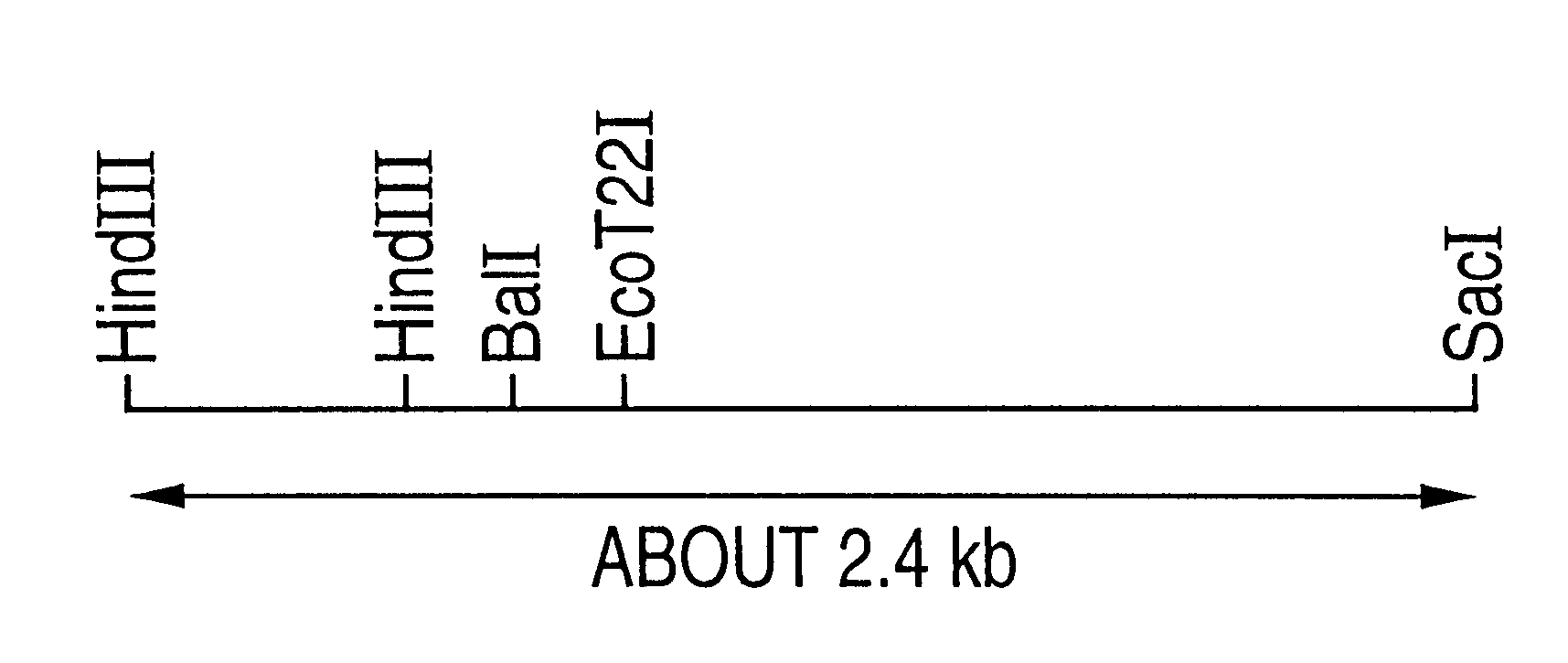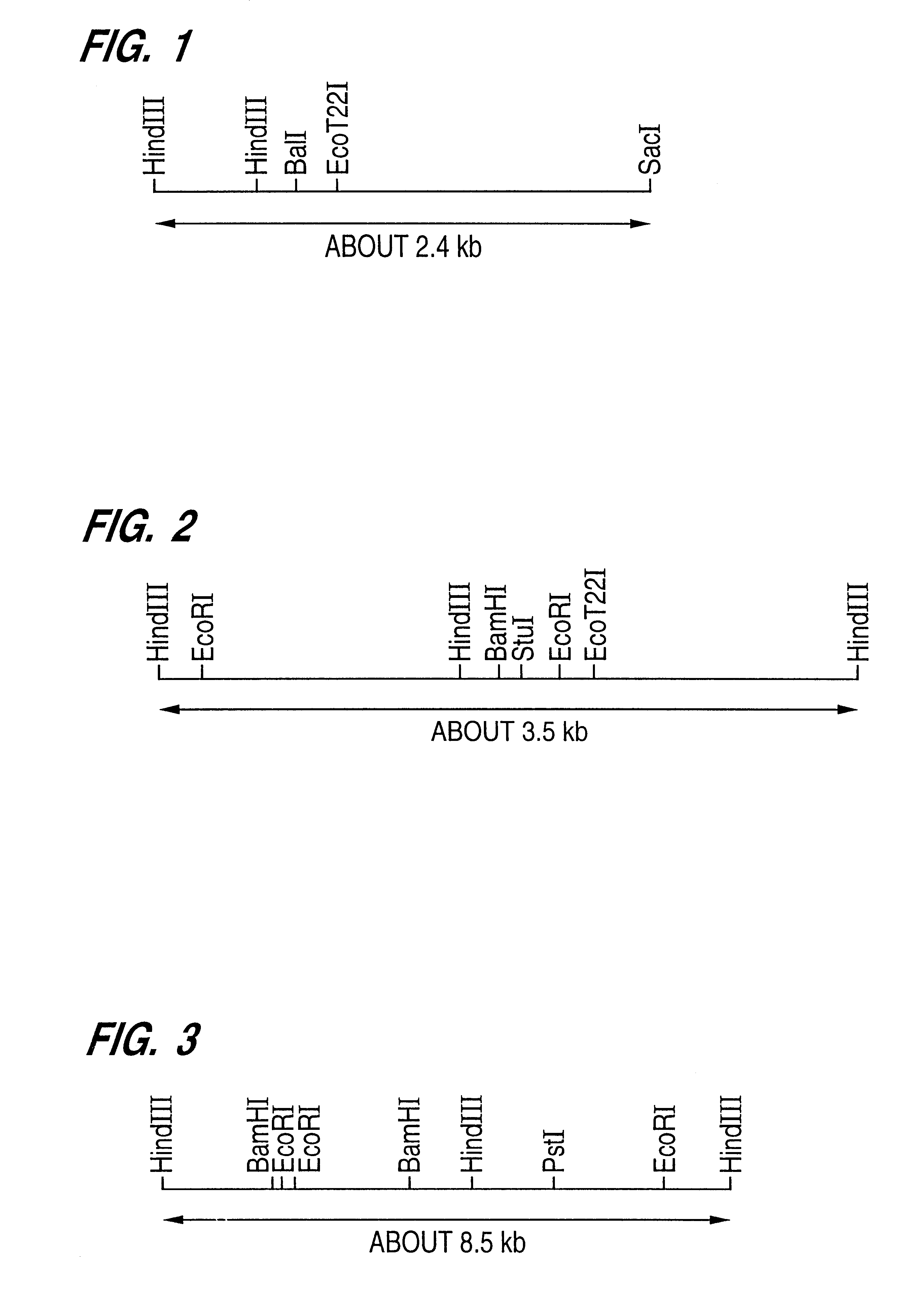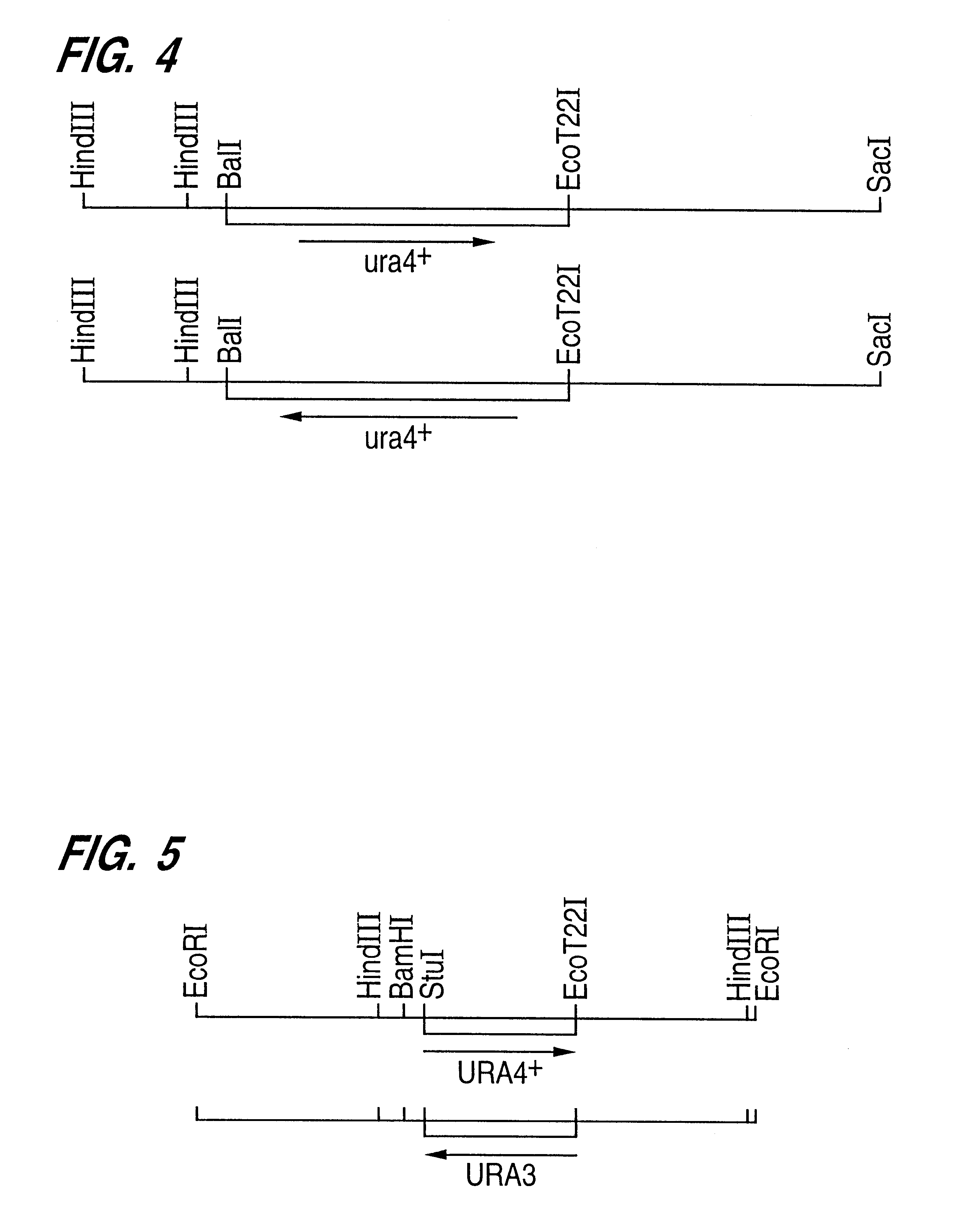Gene regulating aubeobasidin sensitivity
a technology of aubeobasidin and gene regulation, which is applied in the field of gene regulation of aubeobasidin sensitivity, can solve the problems of insufficient knowledge of diagnostic drugs, no satisfactory results in specificity or sensitivity of drugs, and none of them can achieve satisfactory effects
- Summary
- Abstract
- Description
- Claims
- Application Information
AI Technical Summary
Problems solved by technology
Method used
Image
Examples
example 1
Cloning of a Gene Regulating Aureobasidin Sensitivity Originating in Fission Yeast Schizo. pombe
1-a) Separation of aureobasidin-resistant mutant of Schizo. pombe
About 1.times.10.sup.8 cells of a Schizo. pombe haploid cell strain JY745 (mating type h.sup.-, genotype ade6-M210, leu1, ura4-D18) exhibiting a sensitivity to aureobasidin at a concentration of 0.08 .mu.g / ml were suspended in 1 ml of a phosphate buffer containing 0.9% NaCl. Then the cells were mutagenized with EMS at a final concentration of 3% at 30.degree. C. for 90 minutes. After neutralizing by adding 8 ml of 5% sodium thiosulfate, the cells thus treated were harvested by centrifugation (2500 r.p.m., 5 minutes), washed twice with 6 ml of physiological saline and then suspended in 2 ml of a YEL medium (3% of glucose, 0.5% of yeast extract). The suspension was incubated at 30.degree. C. for 5 hours under stirring and then spreaded on a YEA plate (the YEL medium containing 1.5% of agar) containing 5 .mu.g / ml of aureobasidi...
example 2
Cloning of Aureobasidin Sensitive Genes Scaur1 and Scaur2 Originating in Budding Yeast S. cerevisiae
2-a) Separation of aureobasidin resistant mutant of S. cerevisiae
A strain S. cerevisiae DKD5D (mating type a, genotype leu2-3 112, trp1, his3) having a sensitivity to aureobasidin at a concentration of 0.31 .mu.g / ml was mutagenized with EMS in the same manner as the one employed in the case of Schizo. pombe. Then resistant mutants were separated on an agar plate of a complete nutritional medium YPD (1% of yeast extract, 2% of polypeptone, 2% of glucose) containing 5 .mu.g / ml or 1.5 .mu.g / ml of aureobasidin A. After repeating the mutagenesis several times, 34 mutant clones were obtained. These mutants were resistant to more than 25 .mu.g / ml of aureobasidin A and estimated as having not a multiple drug resistance mutation but a aureobasidin-specific resistance mutation.
2-b) Genetic analysis
Similar to the above-mentioned case of Schizo. pombe, the genetic analysis using the tetrad analys...
example 3
Gene Disruption Test on Spaur1.sup.S and scaur1.sup.S genes
3-a) Gene disruption test on spaur1.sup.S gene
In order to examine whether the aureobasidin sensitive gene spaur1.sup.S is necessary in the cell growth by the gene disruption test, the plasmid pUARS2R prepared in Example 1-d) was first cleaved with BalI and EcoT22I. After eliminating a DNA fragment of 240 bp, the residual DNA fragment was blunted by using a DNA blunting kit (manufactured by Takara Shuzo Co., Ltd.). Then this DNA was ligated with a DNA containing ura4.sup.+ gene of 1.7 kb, which had been obtained by excising from a pUC8ura4 plasmid [Mol. Gen. Genet., 215, 81-86 (1988)] by cleaving with HindIII and blunting, to thereby give a plasmid pUARS2RBT22::ura4-1 and another plasmid pUARS2RBT22::ura4-6 in which the ura4 DNA had been inserted in the opposite direction. Both of these disrupted genes were excised from the vector pUC118 by cleaving with SacI and HindIII and ARS2RBT22::ura4-1 and ARS2RBT22::ura4-6 (FIG. 4), w...
PUM
| Property | Measurement | Unit |
|---|---|---|
| concentration | aaaaa | aaaaa |
| concentration | aaaaa | aaaaa |
| concentration | aaaaa | aaaaa |
Abstract
Description
Claims
Application Information
 Login to View More
Login to View More - R&D
- Intellectual Property
- Life Sciences
- Materials
- Tech Scout
- Unparalleled Data Quality
- Higher Quality Content
- 60% Fewer Hallucinations
Browse by: Latest US Patents, China's latest patents, Technical Efficacy Thesaurus, Application Domain, Technology Topic, Popular Technical Reports.
© 2025 PatSnap. All rights reserved.Legal|Privacy policy|Modern Slavery Act Transparency Statement|Sitemap|About US| Contact US: help@patsnap.com



